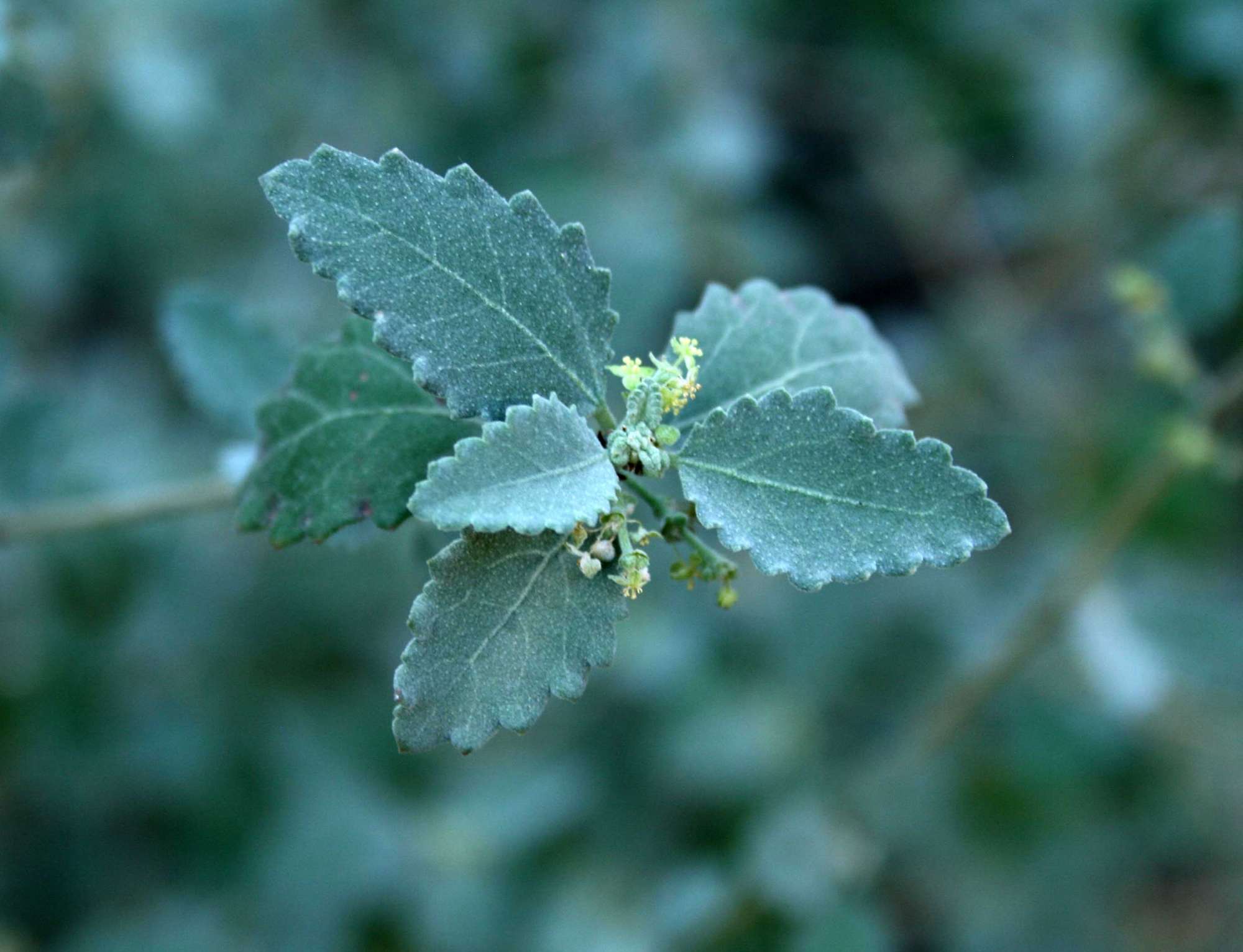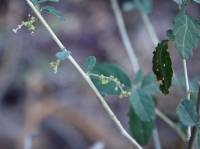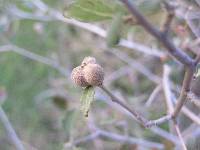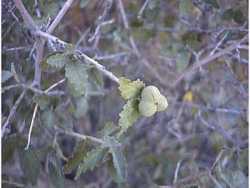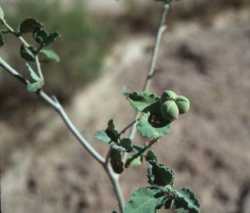Kearney and Peebles 1969, Benson and Darrow 1981, Wiggins 1964
Common Name: mouse's eye Duration: Perennial Nativity: Native Lifeform: Shrub General: Deciduous shrubs, bark gray, brown, or tan, the branches glabrate, divaricately branched, 1-3 m tall. Leaves: Fleshy, alternate, 3-18 mm wide, 0.5-2.5 cm long, gray-green above, lighter in color below, ovate to obovate with toothed margins, teeth sometimes rounded, leaves borne on short petioles, rough to the touch. Flowers: Flowers dioecious, staminate flowers 2 to many, 0.6-1 mm long, greenish-white, borne in leaf axils, the 4 calyx lobes appearing as small petals, 6 stamens; pistillate flowers solitary at branch tips, having 5 sepals and 3 styles. Fruits: Fruit a 3-lobed capsule, (sometimes 2), often persistent, rough to the touch. Ecology: Found on dry, rocky slopes, from 1,500-5,000 ft (457-1524 m); flowers April-October. Notes: Distinguished as a genus by the leaves that are not palmately lobed, with crenate leaves, dioecious flowers and the star shaped hairs that cover the plant. Related to Croton, but can be distinguished by these characters. USDA considers B. incana a synonym but other authorities disagree. Ethnobotany: Unknown Etymology: Bernardia refers to Belgian botanist Bernard de Jussieu (1699-1776), a french taxonomist, myricifolia means with leaves like those of genus Myrica. Myrcia in turn is dervied from the Greek name myrike for tamarisk. Synonyms: Bernardia incana, Tyria myricifolia Editor: LCrumbacher, 2011

